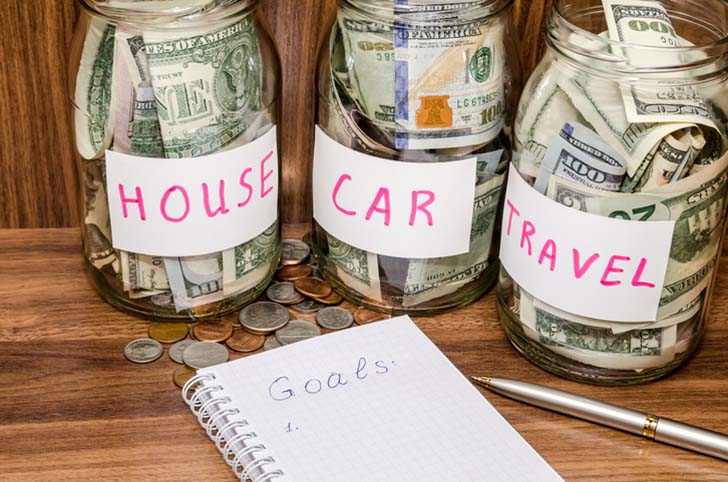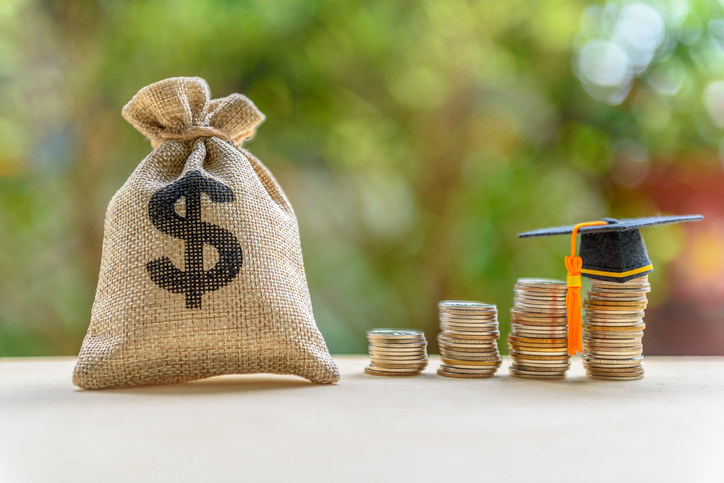College is expensive. Even those who chose to go an alternative route like community college or technical school can face thousands of dollars of cost. To pursue higher education, many take out student loans from the federal government or private lenders and enjoy their experience. Six months after graduation, a notice comes in the mail….first payment due.
In the United States, the average amount of student debt is approximately $30,000, with many taking out between $25,000 to $50,000 over the course of their studies. This large sum of money can seem impossible to pay off, but there are strategies that help people successfully become debt-free over time.
First, let’s define some important terms.
Principal: This is the actual amount of money you borrowed by taking out a student loan; this amount does not change.
Interest: This is the money the organization managing your debt adds to your total amount owed while they manage the loan. Once you graduate, you will receive a letter from an organization called a student loan servicer; they make their money by adding interest. If you take out a loan for 10,000, they will charge you interest (the current average is 5.8%). Depending on how long it takes for you to pay off that 10,000, every year that company will add 5.8% of your total to your amount due.
Fixed Interest Rate: This means the amount of interest the student loan servicer charges will not change during the lifetime of your loan payments; this is common for federal student loans, which make up 90% of most student loans. It is less common among private loans, which also tend to have higher interest rates.
Minimum: the least amount you can pay each month
Want to learn more about the types of loans there are? Check out our article “Types of Student Loans”.
Here are 9 tips for paying off your student debt:
Start setting aside money early in anticipation of paying off your loans.
If you get a job during high school and college, that’s a smart move. It will allow you to build savings for when you graduate, have disposable income for basic needs and emergencies during college, and build your resume. Anticipating having to start paying off your student loans, open a checking account, a savings account, and a second savings account. Every time you get paid, take a percentage of each paycheck to put into each savings account. Over time, this will allow you to have some money set aside to put against the principal of your loan when it is first due and allow you to pay it off quicker. Finding scholarships can also put you in a better place early too. Check out our article called Finding Scholarships for College here to learn more.
Have a side gig.
While you should always set aside money from each paycheck towards your student loans, putting a little extra towards your principal will make a difference in how long it takes for you to pay the loan off, reducing the amount of interest you will pay. If you have a hobby or talent that can bring in some extra money, using that income as an extra boost every month against the principal is a smart choice. Some people are using the gig economy as delivery drivers to do this as well.
Make sure your payments cover at least the principal.
There are times when paying off the minimum is all you can afford to do. However, it often covers the interest and does not reduce the total amount owed, accruing more interest. Unless you are in such a bad financial situation, you cannot do more than that – in which case, reaching out if you can refinance or renegotiate your loan may be the better option – always try to make sure you are making enough of a payment the principal is affected.
If any extra money comes your way, use it to pay down the principal.
Sometimes people come into a boost of extra cash. Whether it is your annual tax return, a gift from a relative, or payments from an insurance claim, taking that money and putting it against the principal can reduce your interest payments, as well as the length of time you’ll be paying off that loan. It may be tempting to use that money for a trip or a fun new gadget, but putting those enjoyments off now will allow you greater freedom in the future.
Revisit your payments as your financial situation changes.
Income changes. Sometimes you’ll take a new job with better pay or receive a raise. Unfortunately, lay-offs happen as well. If you see an increase in monthly income, increase your payments appropriately. If you’re making $20.00 an hour, do not keep paying like you only make $12.00 per hour. If a catastrophe happens, consider reducing your payments. It is possible to furlough payments if you are in a dire situation, but this should be avoided and only used as a last resort.
Be consistent.
Make sure you don’t forget your payments! Most servicers in the modern era have automatic payment options. Go ahead and set that up to ensure you never miss one. One temptation people face if they manually make payments is to arbitrarily increase or decrease the amount you’re paying based on your monthly situation. Maybe you want to take a weekend trip, and an extra $100 in your pocket seems nice…don’t give in! If you can afford the trip without that extra $100 from your payment, great, then you don’t need it. If you can’t, you probably shouldn’t be taking the trip anyway.
Budget.
Planning out your monthly expenses can be useful. It will ensure your bills get paid first, including your student loan bill. By guaranteeing it is a priority in your budget, you will be less likely to accidentally overspend if you have the money withdrawn automatically or remind you if you’re not (though we definitely recommend you do). It may also highlight some places where you are spending money on things you don’t really need that could be going against the principal of your loan.
Pay more than the minimum.
If you want to pay your loan off quickly, this is a must. Paying off the minimum will get you there, eventually, often in 10-20 years, depending on how much you borrowed. If you want to be free of this loan quickly, reduce your principal by paying off more than the minimum. Paying more regularly is a smart decision. Don’t put so much into your loans that you can’t make other important payments – be responsible – but try to do more if possible.
If you have multiple loans, pay off the smallest ones first.
This strategy is sometimes called the debt snowball. Often, loans can be different amounts, and thanks to the internet, you can pay down specific loans first. If you have one loan for $5,000 and one for $10,000, paying down the $5000 loan first will be a way to take a realistic chunk out of the loan. There is a psychological component. Tackling easier goals prepares you to tackle harder ones. It also reduces the principal faster.
Student loans can be a blessing and a curse. They help you pursue a career, but they also weigh you down for a very long time with financial obligations that can become an obstacle to other achievements. Being proactive before you take out the loan and being responsible can make paying it off a much easier task and reduce the time in the long run.




